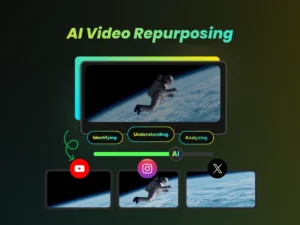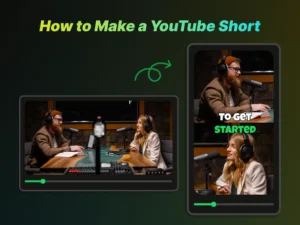In today’s digital world, effective YouTube content creation demands reaching a broad audience. Content repurposing, transforming existing videos into new formats, is a key strategy for this, boosting SEO and saving time. Unlike cross-posting (sharing the same content across platforms) or reposting (sharing the same content on the same platform), repurposing repackages video content for different platforms. Tools like WayinVideo can help identify key video moments for engaging clips. This guide offers instructions, tools, and strategies to repurpose YouTube content for various social media platforms, maximizing your online presence.
Benefits of Repurposing Your YouTube Content for Your Online Presence
Repurposing content offers numerous advantages, including:
- Time Savings: Instead of starting from scratch, repurposing allows you to leverage existing video resources.
- Increased Content Output: You can generate more content from the same original YouTube video.
- Improved SEO: Diversifying content formats improves search engine rankings.
- Broader Audience Reach: Different platforms attract different audiences, expanding your content’s reach.
- Enhanced Content Distribution: Distribute your message across multiple channels seamlessly.
Content recyclability and an iterative approach to content improvement are key principles in making content repurposing a vital component of any successful content strategy. According to recent data, repurposing high-performing content can extend its lifespan and maximize return on investment.
6 Steps to Repurpose Your YouTube Content Fast
Repurposing content doesn’t have to be a daunting task. Here’s a streamlined, six-step approach to repurpose your YouTube content effectively.
Step 1: Identify Your Best-Performing YouTube Videos
The cornerstone of successful content repurposing lies in identifying your top-performing YouTube videos. Analyze your analytics to determine which videos have garnered the most views, highest engagement rates, and positive feedback. This data-driven approach ensures you’re focusing on content that resonates with your audience, maximizing the potential impact of your repurposing efforts.
For example, if a video on “5 Tips for Beginner Guitarists” is performing exceptionally well, consider breaking down each tip into individual short videos for platforms like TikTok and Instagram Reels. This allows you to cater to different audience segments while leveraging the existing success of your core content.
Step 2: Convert Long-Form YouTube Videos into Short Clips
Long-form YouTube content often contains valuable segments that can stand alone as engaging short clips. Utilize video editing software to extract these key moments. Focus on creating concise, attention-grabbing snippets perfect for platforms like TikTok, Instagram Reels, and YouTube Shorts.
According to creator insights, short-form video is crucial for content growth and monetization. Repurposing long-form YouTube videos into short, snappy content can significantly increase visibility and engagement. Be sure to add captions and engaging visuals to capture attention quickly.
Step 3: Easily Create Viral Short-Form Videos Using AI
Turning those long YouTube videos into shareable gold doesn’t have to take hours. AI-powered tools now make this incredibly efficient. For instance, WayinVideo is a cutting-edge AI tool designed specifically to grasp key video moments and help you create potentially viral clips in a flash. It helps turn extensive footage—whether from gaming, podcasts, courses, or vlogs—into engaging, shareable snippets almost instantly. With features like one-click clip generation, the ability to find specific moments using text prompts, and blazing-fast processing even for long videos, it streamlines the path to boosting reach across social media.
Benefits of using such AI clipping tools:
- Faster Video Production: Drastically cut down editing time.
- Higher Engagement Potential: Create clips tailored for short attention spans on social media.
- Improved Accessibility: Many automate captions, making content reachable for a broader audience.
- Effortless Editing: Often include features for automatically adjusting aspect ratios for platforms like TikTok or Instagram Reels.
- Versatility: Handle various video types, from vlogs and podcasts to e-commerce and educational content.
- Data-Driven Insights: Some offer analytics to help refine your clipping strategy.
These AI tools can segment full-length YouTube videos, identify highlights, add animated captions, and format clips perfectly for different platforms, often with just a click. They can significantly reduce the manual labor involved in repurposing.
Step 4: Promote Your YouTube Videos on Other Platforms
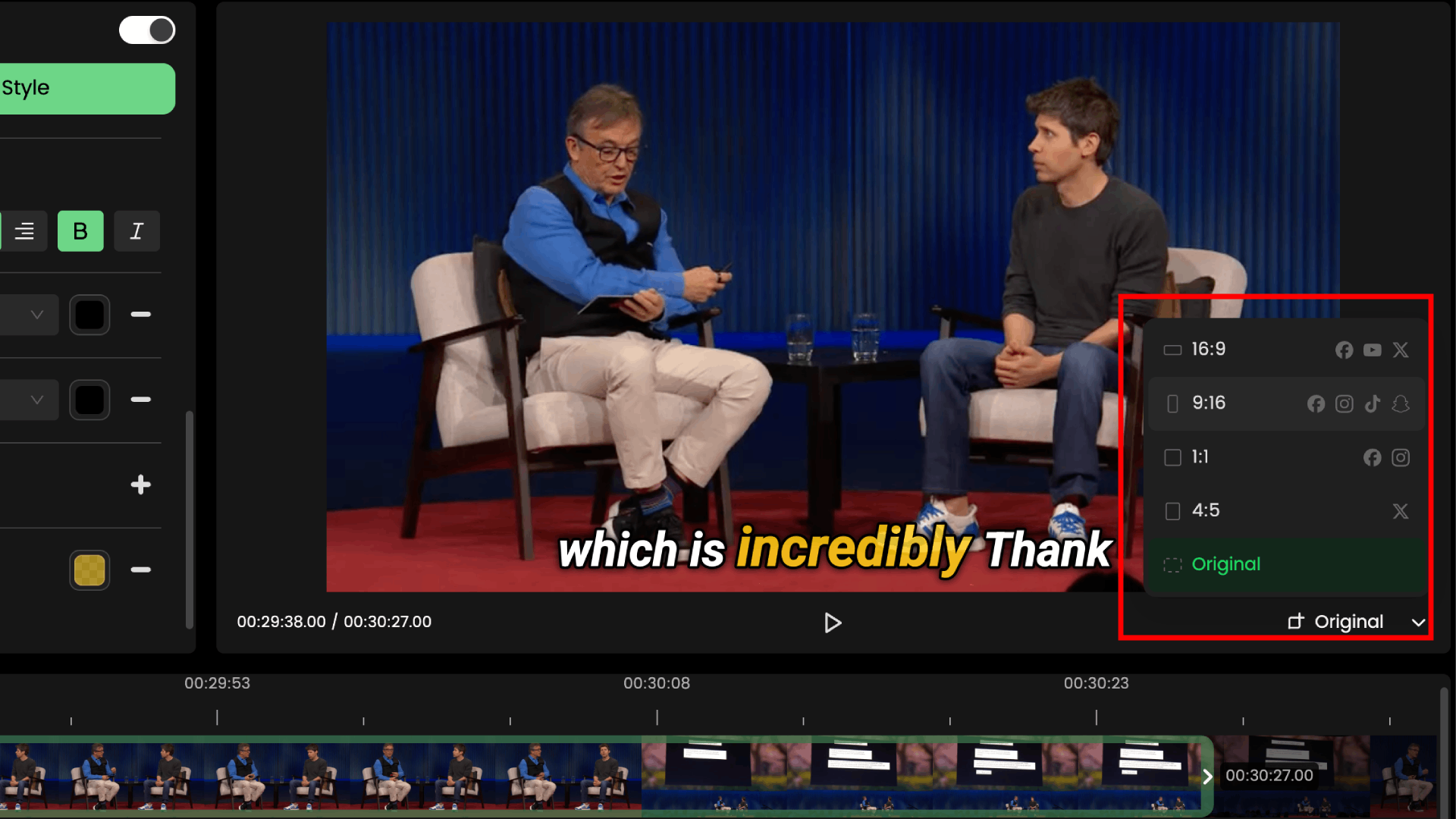
In the screenshot, the user is using WayinVideo, where the AI accurately extracts clips from a longer video. The user can then adjust the aspect ratio—for example, to 1:1 or 9:16—making the video suitable for publishing on various social media platforms like TikTok or Instagram Reels.
Cross-promote your YouTube videos on various social media platforms to drive traffic back to your channel. Create visually appealing posts with compelling descriptions and direct links to your videos. Tailor these promotions to each platform to maximize engagement.
For example, on Twitter, use eye-catching GIFs and concise text to tease the content of your YouTube video. On Instagram, share visually appealing stills or short video clips with a call-to-action encouraging viewers to watch the full video on YouTube.
Step 5: Create Facebook and LinkedIn Videos from YouTube Content
Repurpose your YouTube content into formats suitable for Facebook and LinkedIn. These platforms are ideal for longer, more in-depth videos. Create thought leadership posts, infographics, and educational content that aligns with the professional focus of these platforms.
Edit your YouTube videos to fit the aspect ratios preferred by Facebook and LinkedIn. Add engaging intros and outros, and optimize your video descriptions with relevant keywords to improve visibility.
Step 6: Utilize Instagram, TikTok, Reddit, and YouTube Shorts
Each platform offers unique strengths for content repurposing. Instagram is ideal for storytelling, carousels, and user-generated content. TikTok excels with short-form videos and trending challenges. Reddit thrives on topic-specific content and community engagement. YouTube Shorts benefits from integrating with the wider YouTube ecosystem and offers category-specific discoverability.
Platform-Specific Strategies:
- Instagram: Repurpose snippets of your YouTube videos into visually compelling Reels.
- TikTok: Participate in trending challenges and create short, engaging videos that link back to your YouTube channel.
- Reddit: Share relevant clips in niche subreddits to tap into targeted communities. Maintain authenticity to avoid the opposite effect, which is being viewed negatively by the community.
- YouTube Shorts: Create Shorts directly from your existing YouTube content to capitalize on the platform’s algorithm.
How to Repurpose YouTube Content Without Extra Work
Repurposing content doesn’t have to feel like adding another full-time job to your schedule. By integrating repurposing into your initial YouTube content creation workflow, you can streamline the process and minimize extra effort.
Begin by considering how each piece of YouTube video content can be repurposed during its initial creation. For example, when filming a YouTube video, think about which segments could be easily extracted as standalone clips for social media.
Tools designed for audio processing can significantly reduce the time spent on repurposing audio content. Certain AI tools designed for audio can automatically generate transcripts, summaries, key topics, chapter breakdowns, quotes, hooks, and timestamps from audio files or YouTube links. This can save over 20 hours per week on editing tasks.
Using Video Effects Libraries
Enhance your repurposed content with professional-quality video effects using platforms offering stock assets. These effects can add visual appeal and keep your audience engaged without requiring advanced editing skills. High-quality content will often stand out from the rest, especially when starting out.
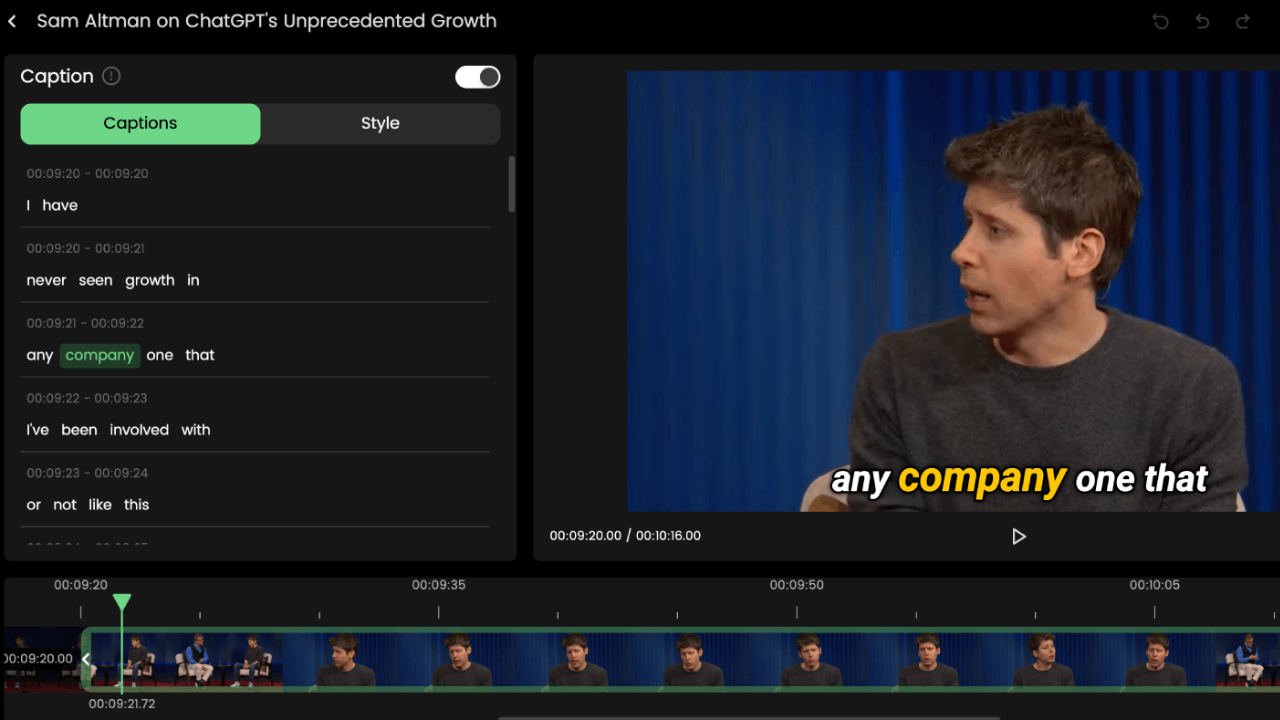
The screenshot shows that you can use AI tools like WayinVideo to add subtitles to videos. Even better, you can apply different styles and animations to the subtitles, making such videos more likely to go viral.
Tips for Managing and Scheduling Repurposed Content
Use scheduling tools to plan and automate the distribution of your repurposed content across multiple platforms. This ensures consistent engagement and saves time.
Repurposing Content for Social Media Made Easy
Automated tools streamline the process of uploading videos to various platforms such as YouTube Shorts, TikTok, and Instagram. These tools can convert long videos into short clips in different formats (square, vertical, with/without captions/graphics).
Using AI for Easy Content Repurposing
As previously mentioned, AI tools can automate video editing, repurposing, and video content marketing. They convert long-form video into short clips for social media, automatically caption clips, identify key moments for highlights/trailers, and help optimize videos for search.
Top 7 Ways to Repurpose Your YouTube Video Content
Here are several concrete ways to repurpose your YouTube video content for maximum impact:
- Create Short-Form Videos from Long-Form Content: As highlighted, breaking down your longer YouTube videos into short, engaging clips is perfect for platforms like TikTok, Instagram Reels, and YouTube Shorts.
- Promote Your YouTube Videos on Other Platforms: Cross-promote your videos with engaging visuals and compelling descriptions.
- Create Facebook and LinkedIn Videos from YouTube Content: Edit your videos to align with the professional tone of these platforms. Thought leadership posts, infographics and relevant captions can go a long way!
- Utilize Instagram, TikTok, Reddit, and YouTube Shorts: Adapt your content to the unique formats and audience preferences of each platform.
- Repurpose Content for Podcasts and Live Streams: Extract the audio from your videos to create podcast episodes, or use your videos as a script for live streams.
- Convert Videos into Blog Posts and Infographics: Transcribe your videos and turn them into blog posts. Summarize key points from each video to create attention-grabbing infographics.
- Use Repurposed Content for Email Marketing Campaigns: Embed video clips in your email newsletters to boost engagement and drive traffic to your YouTube channel.
Repurposing Old YouTube Channels: To Revive or Start Anew?
When faced with an outdated YouTube channel, it’s vital to carefully assess whether reviving it is the best course of action, or if starting from scratch would yield better results. Reviving an old channel can leverage any existing subscriber base and video library, but it might also carry the baggage of outdated content and branding.
Pros of Reviving an Old YouTube Channel:
- Existing Subscriber Base: Even if inactive, existing subscribers provide a head start.
- Video Library: Old videos can be repurposed or updated to attract new viewers.
Cons of Reviving an Old YouTube Channel:
- Outdated Content: Old content might not align with your current brand or target audience.
- Stale Branding: An outdated look and feel can deter new viewers.
Starting a new channel offers a clean slate, allowing you to build a brand and content strategy from the ground up. However, it also means sacrificing any existing audience and starting with zero visibility. Analyze your goals and resources to make an informed decision.
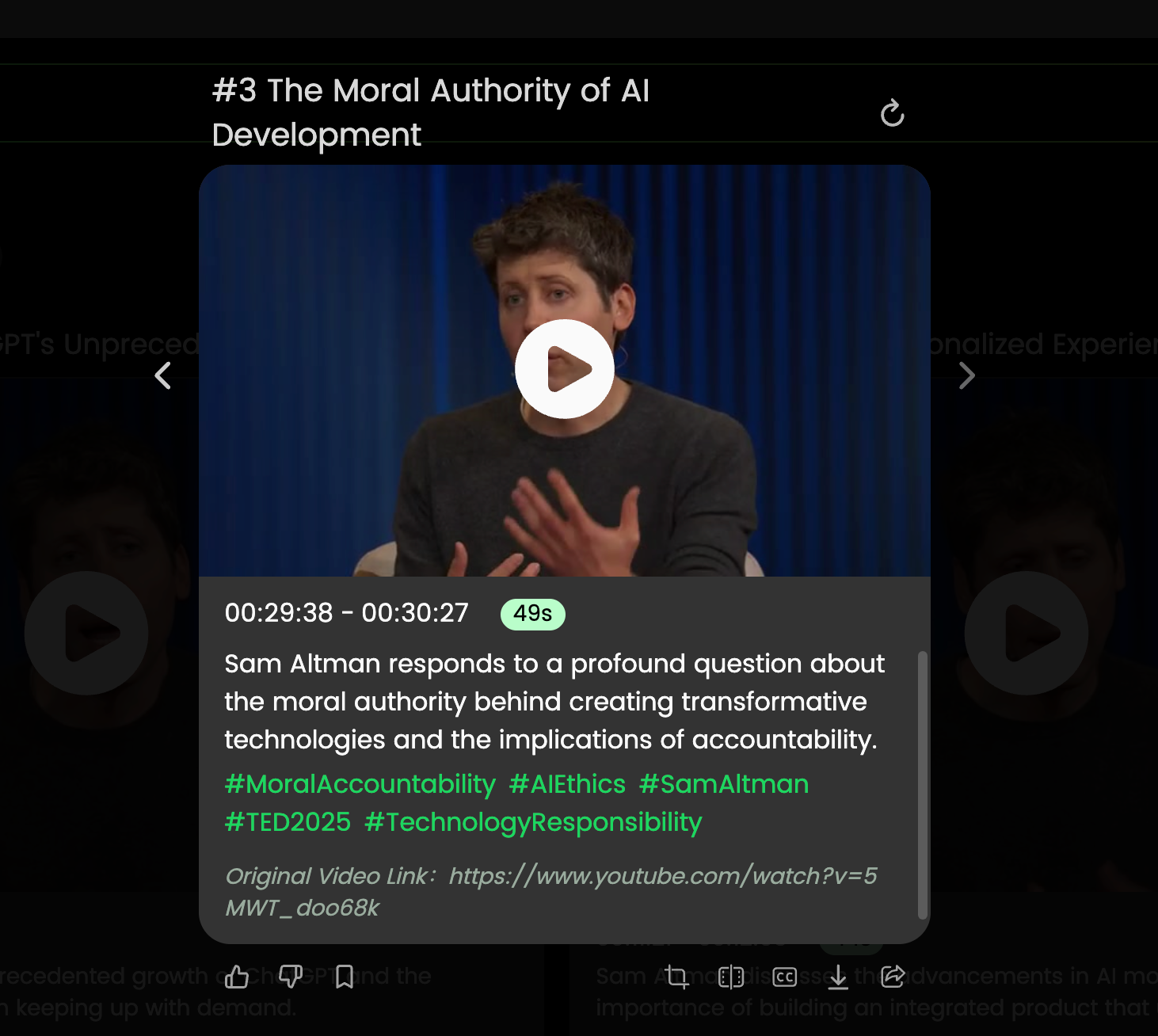
The screenshot shows that WayinVideo can automatically generate titles, descriptions, and tags for captured video clips based on their content. This helps attract clicks on social media, improves video SEO, and enhances overall performance—all powered by AI automation.
Tips for Revamping an Old Channel for Better Performance:
- Update Branding: Refresh your channel art, logo, and tagline to reflect your current brand.
- Optimize Content: Review and update old videos, adding new intros, outros, and annotations.
- Engage with Subscribers: Respond to comments and messages to reconnect with your existing audience.
Repurposing Content for Maximum Reach: A Community Perspective
Top creators and brands employ various strategies to repurpose content effectively and grow their audience. They understand that repurposing isn’t just about copying and pasting; it’s about adapting content to fit the unique characteristics of each platform.
Gary Vaynerchuk, for example, famously repurposed a one-hour keynote speech into 64 pieces of content across various platforms, including LinkedIn articles, YouTube videos, Instagram Reels, TikToks, Twitter posts, podcast episodes, and email newsletters. This exemplifies how a single piece of core content can be transformed into multiple touchpoints to reach diverse audiences.
Strategies for Growing Followers and Increasing Views Through Repurposing
- Consistency: Maintain a consistent posting schedule to keep your audience engaged.
- Engagement: Interact with your audience through comments, polls, and Q&A sessions.
- Originality: Create unique content for each platform to provide added value.
Creators may find that the investment in tools that automate the editing process will lead to more efficiency and engagement.
Repurposing Content in 2025: Tips and Tricks
As we look ahead to 2025, staying ahead of the curve in content repurposing means embracing emerging technologies and evolving audience preferences. One key trend is the increasing use of AI to automate content creation and optimization.
AI-powered tools, like the ones mentioned earlier for clipping or audio processing, are becoming indispensable for quickly repurposing content into multiple formats. These tools can automatically generate captions, extract key moments, and optimize videos for different platforms.
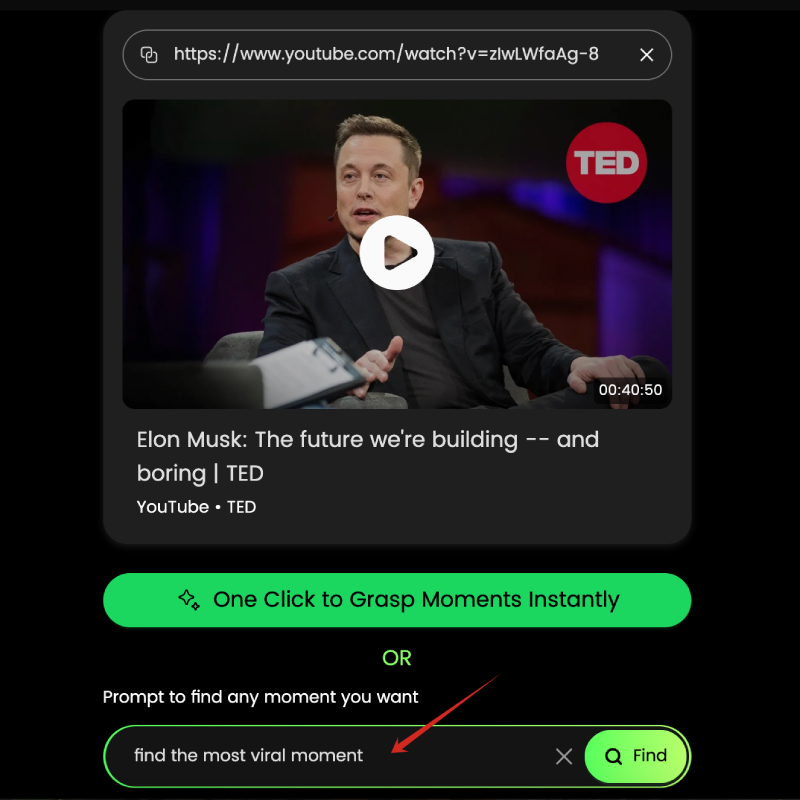
The screenshot shows that users can input a YouTube link into WayinVideo, along with a search prompt representing the moment they want to find—for example, the image displays the prompt: “find the most viral moment.” The AI will then accurately locate the corresponding clip based on the input.
Up-to-Date Strategies for Repurposing Content:
- AI-Powered Automation: Embrace AI tools to streamline content repurposing.
- Personalized Content: Tailor content to individual user preferences for higher engagement.
- Interactive Formats: Experiment with interactive formats like quizzes, polls, and live Q&A sessions.
Future Trends in Content Repurposing and Online Marketing
- VR and AR: Explore repurposing content for virtual and augmented reality experiences.
- AI-Driven Content Creation: Utilize AI to generate original content based on existing material.
- Data-Driven Optimization: Use analytics to continually refine your repurposing strategies.
FAQ on Repurposing YouTube content
How do I ensure that my repurposed content maintains a consistent brand identity across different platforms?
Maintaining a consistent brand identity when repurposing content across different platforms involves a multifaceted approach. First, define your brand’s core elements, including visual assets (logos, color palettes, typography), tone of voice, and key messaging. Use these elements as a style guide when adapting content for each platform. For example, if your YouTube channel features a specific intro and outro sequence, ensure that short clips repurposed for Instagram Reels or TikTok include a shortened version of these elements. Similarly, if your brand employs a certain style of humor or educational approach, maintain this tone in all repurposed content.
Design tools and creative software suites can help standardize visual elements, ensuring that graphics, thumbnails, and captions align with your brand aesthetic. Furthermore, it’s crucial to understand the nuances of each platform’s audience and tailor your messaging accordingly, without sacrificing your brand’s core values. Social media management platforms can help monitor brand mentions and engagement across different channels, allowing you to address any inconsistencies or feedback promptly. Regular audits of your content across all platforms will ensure that your brand identity remains cohesive and recognizable, thereby building trust and loyalty with your audience.
What are some effective techniques for repurposing YouTube content into engaging podcast episodes?
Transforming YouTube videos into engaging podcast episodes requires careful planning and execution. Start by extracting the audio from your YouTube videos, ensuring the audio quality is high and free from background noise. Audio editing software can help clean up and enhance audio quality. Next, structure the podcast episode to suit an audio-only format. This might involve adding an introduction that sets the context, removing lengthy visual demonstrations, and incorporating additional commentary or insights that weren’t present in the original video.
Consider adding sound effects, music, and transitions to enhance the listening experience. For instance, if your YouTube video included visual aids, describe these elements verbally so the podcast listener can visualize the content. Repurpose the video transcript into show notes, providing listeners with summaries, key takeaways, and links to additional resources. Promote your podcast episodes on your YouTube channel through end screens and video descriptions, encouraging your audience to subscribe to the podcast. Podcast hosting platforms can help distribute your podcast to major podcast directories like Apple Podcasts, Spotify, and Google Podcasts. Encourage listeners to leave reviews and ratings to improve visibility and attract new listeners.
How can AI-powered tools significantly enhance the efficiency and effectiveness of content repurposing efforts?
AI-powered tools are revolutionizing content repurposing by automating various tasks and providing valuable insights that improve efficiency and effectiveness. For example, AI-driven transcription services can quickly convert YouTube video audio into text, which can then be used to create blog posts, articles, or social media captions. Video editing and clipping platforms use AI to automatically identify key moments in videos, generate short clips for social media, and add captions. This saves significant time and effort compared to manual editing.
AI-powered content optimization tools can refine written content, ensuring that it is clear, concise, and engaging. Additionally, AI analytics tools can analyze the performance of repurposed content across different platforms, providing data-driven insights into audience preferences and optimizing content strategies. For instance, tools like Google Analytics can track website traffic, engagement metrics, and conversion rates, helping you understand which types of repurposed content are most effective. AI-driven design tools can also assist in creating visually appealing graphics and thumbnails, ensuring that your repurposed content is visually engaging and aligned with your brand. By leveraging these AI tools, content creators and marketers can streamline their repurposing workflows, improve content quality, and maximize the impact of their content across different platforms.
Conclusion
Repurposing YouTube content is a powerful strategy for expanding your reach, saving time, and maximizing the impact of your content. By following these steps and leveraging the right tools, you can transform your existing videos into a diverse range of engaging content that resonates with audiences across multiple platforms.
